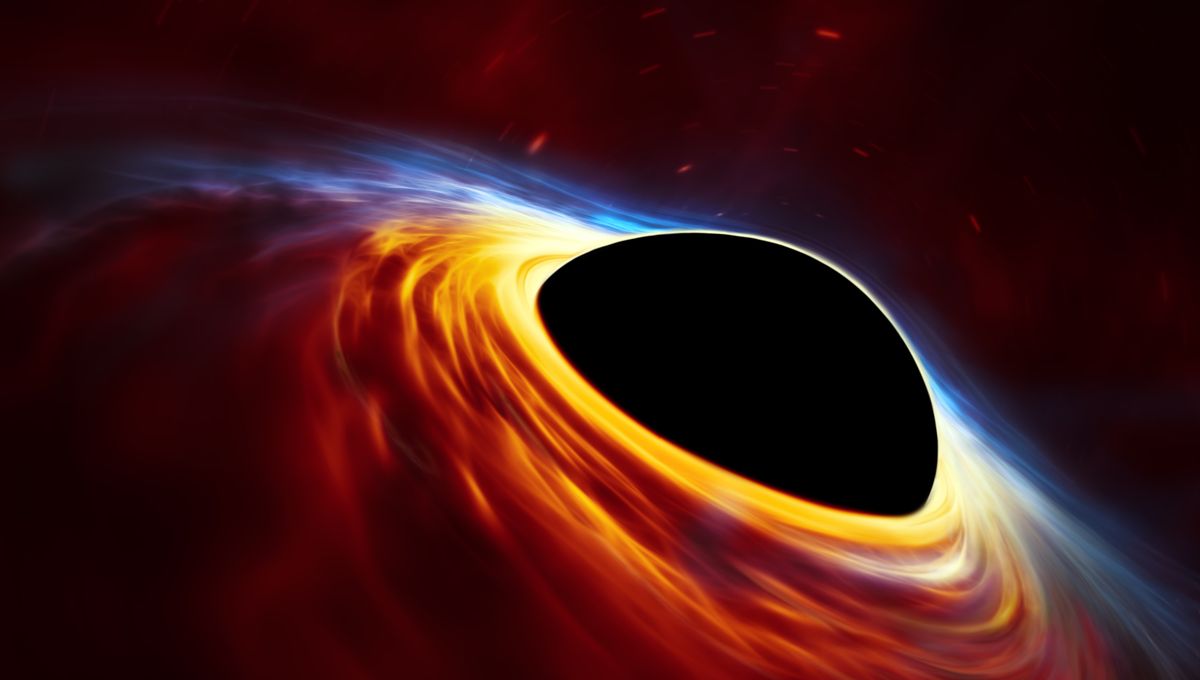
One of the rarest types of black holes might have been found incredibly close to Sagittarius A*, the supermassive black hole at the center of our galaxy. This new black hole is of the intermediate mass class, meaning that it’s not light enough to have formed from a star going supernova. But, it is also not heavy enough to be classed as supermassive. Only about 10 such objects are known, with one of them announced just a few weeks ago.
The discovery comes from stellar cluster IRS 13 (occasionally written with a GC in front that stands for Galactic Center). It is a cluster of hot massive stars with a peculiar object at its center. Originally, it was considered that the central object was a massive star, but thanks to higher-resolution observations researchers were able to tell that it is not a star at all.
The intermediate-mass black hole is estimated to have a mass of 30,000 solar masses. The evidence comes from the motion of the stars, which move in an orderly pattern, as well as X-ray emissions and ionized gas rotating around this object at several hundreds of kilometers per second. The combination of observations across multiple wavelengths from the Very Large Telescope, ALMA, and the Chandra telescope painted a picture consistent with an intermediate-mass black hole.
The strong possibility of this being the case has widespread consequences. Researchers have long proposed that a steady diet of intermediate-mass black holes can help supermassive black holes grow. They get too close to the supermassive black hole and get gobbled up. IRS 13 is believed to have moved closer to the center of the Milky Way (and Sagittarius A*) over the last 10 million years.
“IRS 13 appears to be an essential building block for the growth of our central black hole [Sagittarius A*],” Dr Florian Peißker, first author of the study, said in a statement. “This fascinating star cluster has continued to surprise the scientific community ever since it was discovered around twenty years ago. At first it was thought to be an unusually heavy star. With the high-resolution data, however, we can now confirm the building-block composition with an intermediate-mass black hole at the centre.”
More observations will be necessary to confirm the intermediate-mass black hole and learn more about the cluster. Observations from JWST and the upcoming Extremely Large Telescope will certainly help.
The study is published in The Astrophysical Journal.
Source Link: Extremely Rare Black Hole Found At The Center Of Our Galaxy